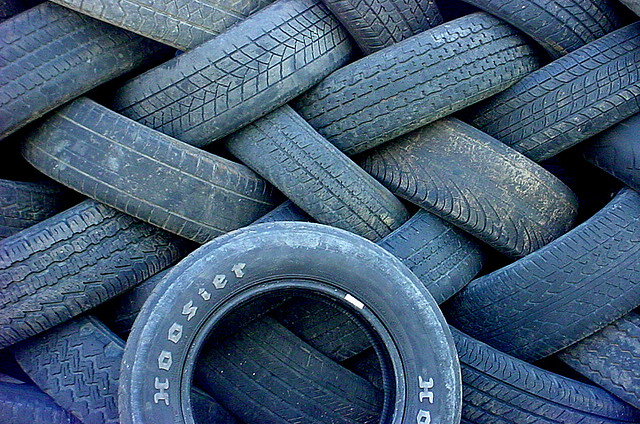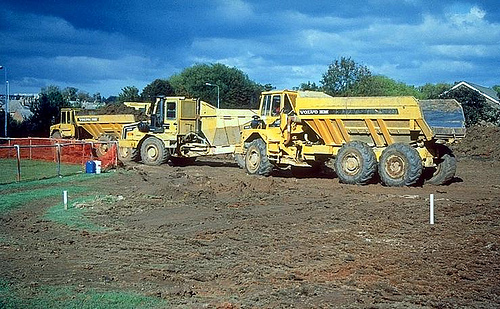The Financial Accounting Standards Board (FASB) and the International Accounting Standards Board (IASB), under their joint Leases Project, propose to substantially revise the existing rules for lease accounting.
Audit, Compliance and Risk Blog
STP Editorial Team
Recent Posts
Currently Proposed Changes to U.S. Lease Accounting Rules
Posted by STP Editorial Team on Fri, Nov 08, 2013
Tags: Business & Legal, Accounting & Tax, Lease Accounting, Accountants, US GAAP, GAAP
Officially Linked: California and Quebec GHG Cap-and-Trade Programs
Posted by STP Editorial Team on Mon, Nov 04, 2013
In late September 2013, California’s Air Resources Board (ARB) and the government of Quebec signed an agreement to harmonize and integrate their cap-and-trade programs for reducing greenhouse gas (GHG) emissions. California’s GHG programs under AB 32 will be officially linked with Quebec’s programs beginning January 1, 2014.
Tags: Business & Legal, California Legislation, Environmental risks, Environmental, Greenhouse Gas, ghg, climate change, Canadian
Alert: Upcoming Changes to Requirements for Safety Recalls
Posted by STP Editorial Team on Wed, Oct 23, 2013
Do you know about these changes? Do you know their effective dates? Is your company ready to comply with each and every change? If your answer to any of these is “no”, or you have no idea what this alert is about, you’ll want to see the Federal Register notice that announced and described these changes. A copy can be found here.
Tags: Business & Legal, Health & Safety, OSHA
Recently, the U.S. Pipeline and Hazardous Materials Safety Administration (PHMSA) and Federal Motor Carrier Safety Administration (FMCSA) issued a new series of notices concerning hazardous materials handling and driver recordkeeping procedures. CMV drivers and transporters of hazardous materials should be alert to the following:
Tags: Business & Legal, Health & Safety, Training, Environmental risks, Hazcom, Oil & Gas
Jane Brown, an avid online shopper in New Mexico, is delighted to find just the candleholders she needs on discounted sale on LuvLee Living, a home décor website based out of New York. She orders a pair, but when the package arrives, she feels they are not as described on the website. She attempts to return them, but is told by LuvLee that sale items are “as is” and non-returnable as per their website’s terms of use. Brown protests that she did not agree to any such terms. LuvLee responds that their terms of use are posted on the site and can be viewed by clicking a link. By browsing the LuvLee Living site, the retailer contends, Brown agreed to the terms of use. Further, should Brown wish to pursue the matter, she will be bound by arbitration under New York jurisdiction, even though she resides far from New York, because such stipulation was also in the terms of use.
New Alberta Energy Regulator to Streamline Regulatory Process
Posted by STP Editorial Team on Wed, Sep 04, 2013
Tags: Business & Legal, Environmental, Oil & Gas, Canadian
Recent Changes to Disclosure Requirements for SEC Registrants
Posted by STP Editorial Team on Tue, Aug 13, 2013
Actions by the SEC, other federal agencies and the courts continue to change or propose changes to the rules concerning the disclosures that publicly listed companies must make. They are responding to the latest series of U.S. federal laws aimed at improving corporate accountability and enhancing growth in a slow economy. Most recently, a court has vacated the SEC rule on disclosure of payments by resource extraction issuers, and the U.S. Government Accountability Office (GAO) has recommended further disclosures about auditor attestation, as follows:
Tags: Corporate Governance, Business & Legal, SEC, Audit Standards
Cal/OSHA Revises Its Hazard Communication Standard
Posted by STP Editorial Team on Mon, Jul 15, 2013
Cal/OSHA’s Hazard Communication Standard (HCS) is designed to ensure that employers evaluate and classify the hazards of workplace chemicals, and that both employers and employees receive relevant information about those hazards. HCS requires all employers with hazardous chemicals in the workplace to develop, implement, and maintain a workplace hazard communication program to inform employees about the hazardous chemicals to which they may be exposed. HCS also requires manufacturers and importers of hazardous chemicals to classify the hazards of the chemicals that they produce or import, and distributors to pass this information to end-users.
Tags: Business & Legal, Health & Safety, OSHA, California Legislation, Hazcom
EPA Superfund Activity
In a rulemaking published in the May 24, 2013 Federal Register, EPA added nine new Superfund Sites to their National Priorities Lists (NPL), bringing to 1,320 the total number of uncontrolled hazardous waste sites now listed on the NPL. Superfund, the more common name for CERCLA, was promulgated in 1980s to identify and clean up hazardous wastes sites and to identify the parties responsible for causing the contamination with the intent that they bear the expense of remediation. The NPL started with 400 sites, and over four decades later, while 365 NPL sites have been delisted and 75 partial deletions have occurred at 58 additional sites, EPA continues to identify sites requiring remediation to eliminate the risks to human health and the environment and Superfund is still being funded at over $1.1 billion annually.
EPA Revises Standards for Identification of Non-Hazardous Secondary Materials
Posted by STP Editorial Team on Tue, Jun 18, 2013
Traditionally, industrial facilities have used fossil fuels such as coal, oil, and natural gas as their main source of energy. Over the years, however, facilities have sought to replace some or all of their fossil fuel with less expensive and more efficient alternative fuels from secondary materials. The Environmental Protection Agency (EPA) has regulated the combustion of such wastes under the Resource Conservation and Recovery Act (RCRA). Under RCRA, some of these secondary materials are classified as ''hazardous wastes,'' while others are referred to as ''non-hazardous secondary materials.'' Facilities that combust ''solid waste'' as defined by EPA under RCRA must be regulated by emission standards issued by EPA under section 129 of the Clean Air Act (CAA).
Tags: Business & Legal, Health & Safety, EPA, RCRA, CAA










